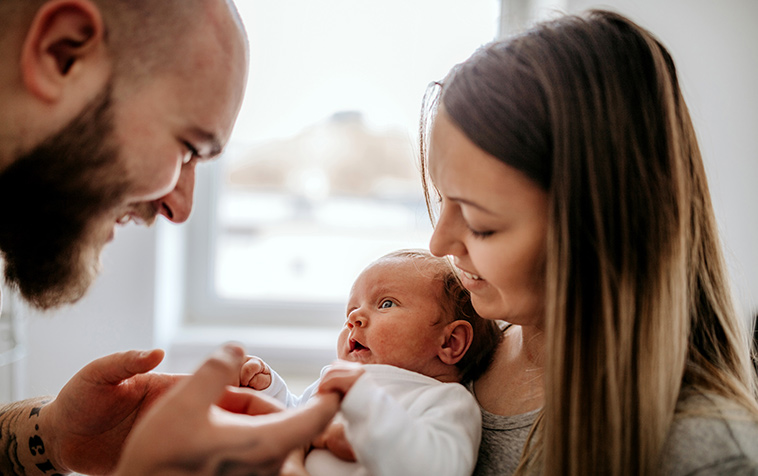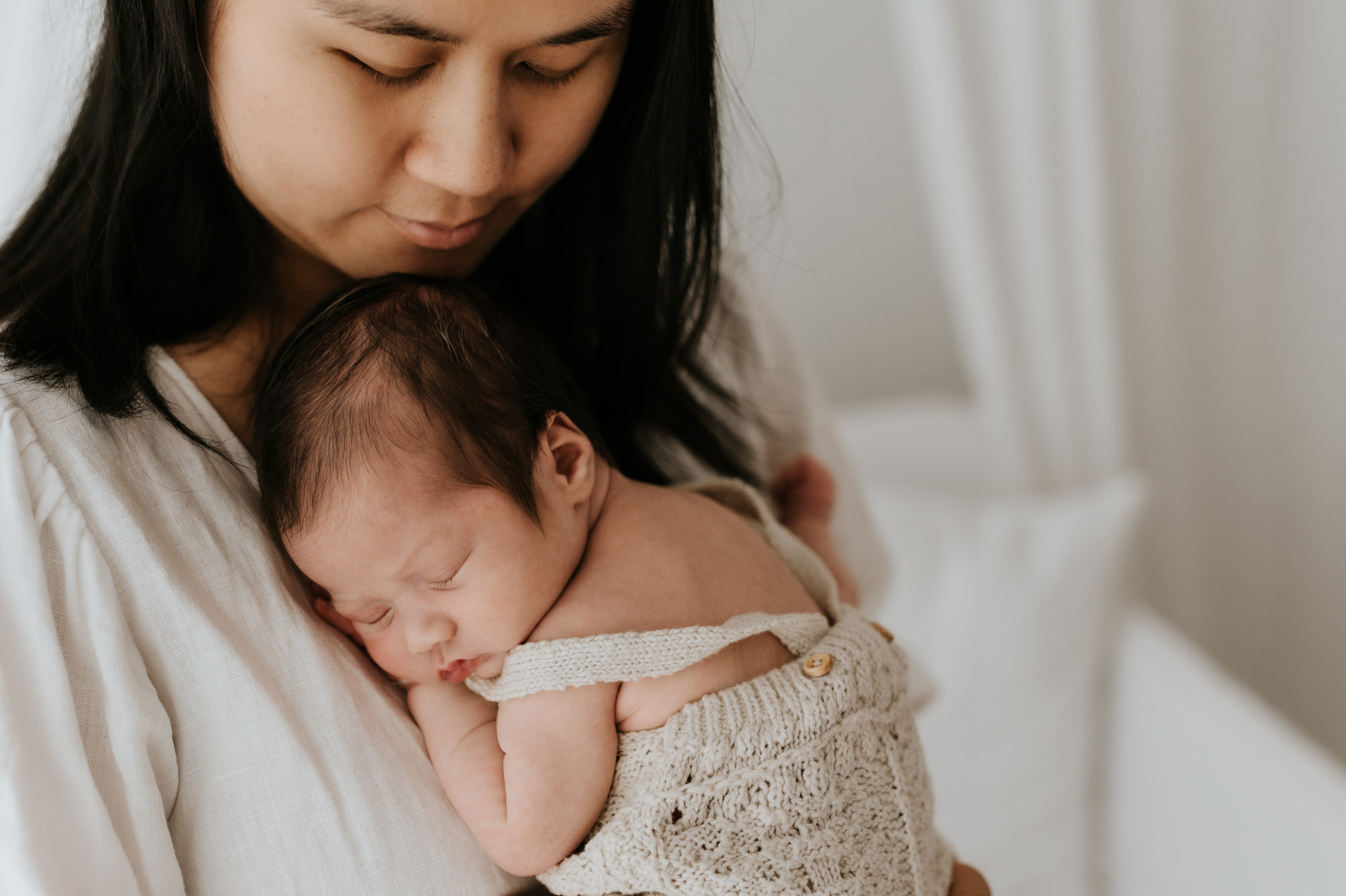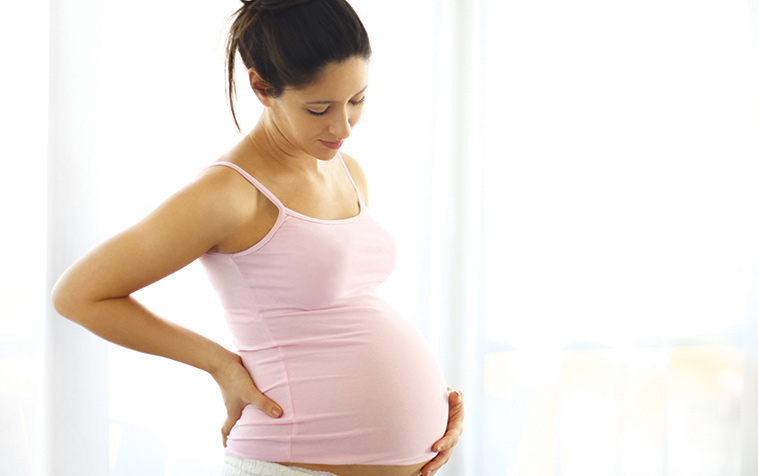
Labour & Birth
Most asked questions
Braxton Hicks are contractions, which tone the uterus but do not dilate (open) the cervix. They occur throughout your pregnancy but you may not feel them until the second trimester and may usually feel more in the third trimester.
Braxton Hicks contractions or tightening are referred to as a tight feeling in your abdomen, which may be quite strong and uncomfortable and are often called ‘false labour;. These contractions can be distinguished from real labour; as they may disappear with a change of position, taking away gravity (side lying) or activity such as a warm bath or shower. They will not last long or develop a regular pattern, but they come and go sporadically. There is a lot of physicality and sensation related to normal growth and change in pregnancy. However, if you are unsure about what you are feeling it is best to discuss this with your care provider.
All uterine activity (tightenings and contractions) originate from the muscles at the top of the uterus (the fundus). Where women ‘feel’ this activity is largely influenced by what the muscles are trying to achieve, i.e contractions are often felt low and Braxton Hicks a general tightening all over (from top to bottom) the uterus.
A birthing partner may be your partner, a family member or a friend. Who-ever the trusted person is that you would like with you during labour and birth they can support you emotionally, physically and act as an advocate for you. It is a great idea to discuss prior to labour what your birth plan is and any specific requests that you would like. It is also a good idea that your birthing partner goes with you to antenatal classes and does some research of their own into labour and birth so that they have an understanding of the journey.
Physically, partners can guide you through breathing and relaxation techniques. As well as this they may be able to support you with massage, get the birthing pool filled and heat up heat bags. Encouraging you to stay hydrated and reminding you to go to the bathroom is also really helpful.
Birthing partners can give you reassurance and encouragement and be that familiar voice. Being an advocate is a helpful role in a birth partner as often while a woman is in labour she may find it difficult to process information and make decisions. Writing down your birth preferences, hopes and fears before labour can be a great way of starting this conversation with your partner/support person and caregivers.
Birthing partners should consider their limits- if you feel faint at the sight of blood, let the doctor or midwife know, sit down if you feel unwell. You may be asked if you would like to cut the umbilical cord or catch the baby- be proactive in telling your caregiver if you do or do not want to take part in these things.
More questions
If you deliver via caesarean, your doctor will physically remove the placenta from your uterus before closing up the incision in the uterus and your abdomen. It is routine to have Oxytocic (contracting drugs) administered into your vein in the hours following a caesarean birth. This is to make the uterus contract and minimise blood loss. Regardless of the way your placenta is delivered, your midwife or obstetrician will inspect the placenta for its completeness.
During pregnancy, if you wish to collect your baby’s cord blood and tissue or if you wish to save your placenta, always notify the hospital, doctors and nurses. If you are not saving your placenta, it will be discarded by the hospital as medical waste.
Regardless of your baby’s position ie: breech or cephalic (head down) etc. the process of having your waters broken during elective C-Section is the same. Once the anaesthetic is administered, the doctor will make a small incision in your lower abdomen just above your pubic hair line. Next, the doctor will break the amniotic sac (bag of waters) which surrounds the baby through the abdominal incision. The amniotic fluid will be suctioned out (the sound is a unique gurgle) and right after that your baby will be brought into the world.
Regional anaesthesia (epidural or spinal anaesthesia) involves the use of local anaesthetics to block sensations of pain from part of the body, and anaesthetists use it for caesarean birth whenever possible. In some cases (uncommon), general anaesthesia is used for a caesarean birth. These include cases where the mother is bleeding or medically unsuitable or, when there’s an extreme emergency with you or your baby.
While general anaesthesia is safe for pregnant women, it’s not usually the first choice, unless it’s medically necessary. General anaesthesia is standard “sleep” anaesthesia, and is what most people think of when they hear “Anaesthesia.” In the event of a general anaesthetic you would get a mixture of medicines (both inhaled and through the vein) that will make you fall completely asleep. You would feel and remember nothing during your surgery. General anaesthesia, while safe, does have higher risks in pregnant women. In addition, any medicines you may be given, will also go to your baby, so there is a chance your baby may be sleepy when born and may need some help breathing (a paediatrician is always present at a caesarean birth). If this happens, it almost always improves very quickly after birth. Also, if you are asleep, you will not remember the birth. For these reasons, general anaesthesia is not the preferred choice for pregnant women unless there is a medical reason warranting the need to do so.
Following a caesarean birth you would not be able to walk around due to the spinal anaesthesia which numbs the nerves that supply the tummy, hips, bottom and legs. Once the nerves are completely numb you will not feel any pain from an operation and you will also not be able to move your legs. During a caesarean birth it is normal to still be able to feel the movement involved abdominally with your baby being born. No pain but pushing and pressure like sensations, some women find these quite intense. Other medications can also be injected which provide excellent pain relief for several hours after the operation. The length of time that the spinal anaesthetic takes to wear off will depend on the medications that the anaesthetist uses for the spinal anaesthetic. Usually the block (numbness) will have worn off in four to six hours. If there have been no complications after your caesarean birth you will be encouraged to walk around within the first 12 hours after delivery to decrease the risk of blood clots in your legs and chest infections. You will be able to eat something light as soon as you feel able (unless specifically advised not to).
Macrosomia refers to fetal growth above a specific threshold. The specific thresholds vary between 4000g and 4500g. However, RANZCOG define macrosomia as a fetal weight of greater than 4500g. If it is believed a baby has fetal Macrosomia the possible risks to two patients need to be considered – both mother and infant. The most serious risk of fetal macrosomia is birth trauma for the baby, especially something called a shoulder dystocia, where after the baby’s head is born the rest of his or her body does not birth easily.
It may be recommended to deliver your baby via caesarean birth when worried about the possibility of a macrosomic baby – it maybe an easier way to get the baby out safely (however there are definitely exceptions to this rule). At the same time, caesarean births come with additional risk to the mum and baby and result in additional days in hospital and longer recovery periods (abdominal wound healing). And since our estimates of fetal weight may not be accurate (even with ultrasound), these risks may be unnecessary. It is recommended to have an open and frank discussion with your Doctor about the clinical information available to you. Discuss the estimated size of your baby, your obstetrical history, your physical exam, and your risk factors. Balance the potential risks and benefits to both you and your baby when making your final decision.
A small number of pregnant women may prefer a caesarean section to vaginal birth for various non-medical reasons. Women considering elective caesarean section, where there may not be a clear medical indication, should discuss this decision with their doctor or midwife.
There are some risks and benefits to this decision for both mother and baby. It is important to know that some risks may not be apparent until subsequent pregnancies or until after your baby is born. Your doctor and midwife will respect your right to be involved in the decision making regarding your birth, considering your wishes, your perception of the risks (emotional and physical health) and plans for future pregnancies, your plans for feeding, your baby/babies development and your individual circumstances .
The Royal Australian and New Zealand College of Obstetricians recommend that elective caesarean section in women without additional risks should be carried out at approximately 39 weeks gestation. If you are concerned about the planned date for your caesarean birth, we recommend discussing this with your doctor or midwife.





